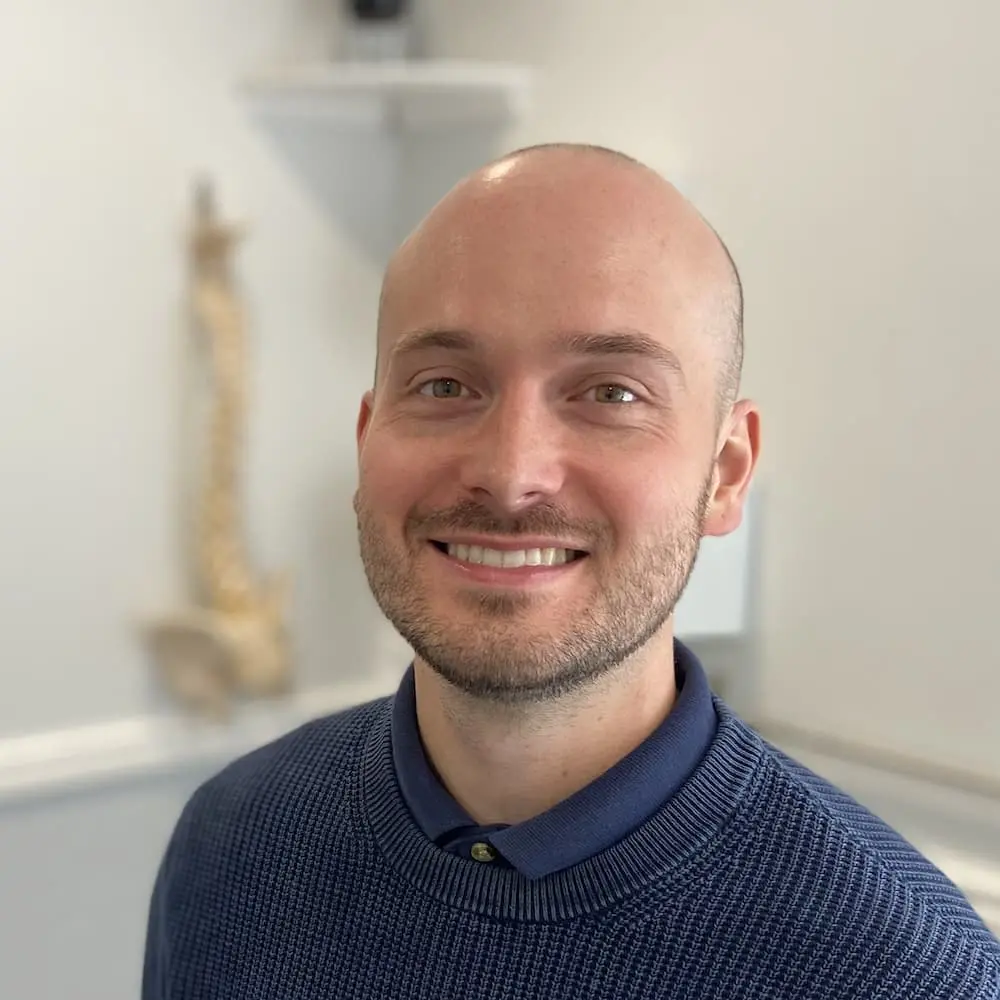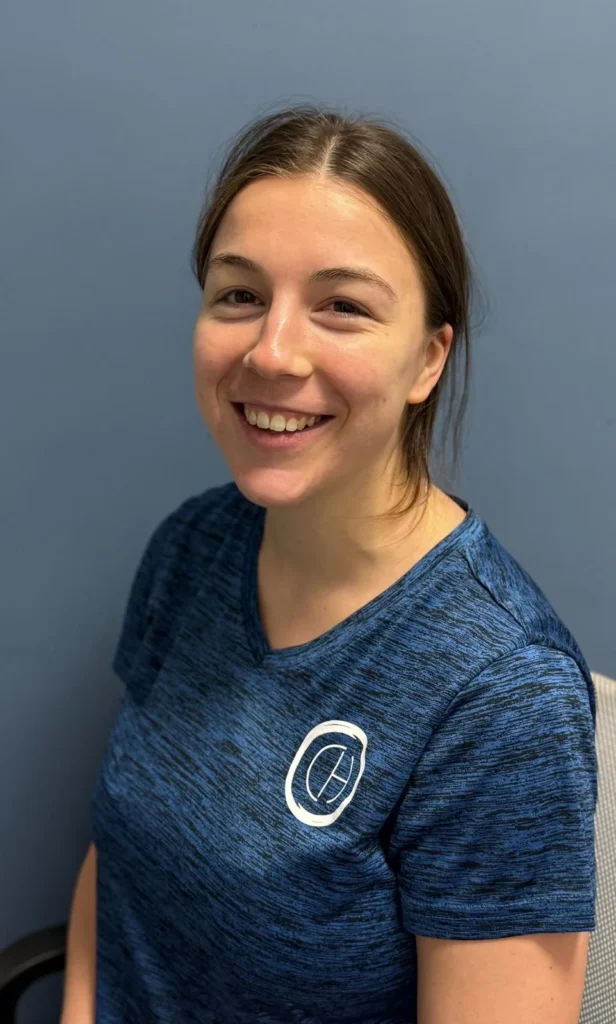Hypermobility
What conditions are associated with hypermobility?
Hypermobility refers to the ability of certain joints to move beyond the normal range of motion. Several conditions and syndromes are associated with joint hypermobility, including:
- Joint Hypermobility Syndrome (JHS): Also sometimes referred to as benign hypermobility joint syndrome, it’s characterised by joint hypermobility and related symptoms like pain and frequent dislocations without a systemic rheumatological disease.
- Ehlers-Danlos Syndrome (EDS): A group of inherited connective tissue disorders, with several subtypes. The hypermobile type of EDS (hEDS) is especially known for joint hypermobility, soft and stretchy skin, and a broader range of systemic manifestations.
- Marfan Syndrome: A genetic disorder affecting connective tissue. People with Marfan syndrome often have long fingers and limbs. They may exhibit joint hypermobility, particularly in the hands.
- Osteogenesis Imperfecta: A genetic disorder characterised by brittle bones. Some types can also present with hypermobility of the joints.
- Stickler Syndrome: A genetic disorder affecting collagen which can lead to hypermobility, along with vision and hearing problems.
- Loeys-Dietz Syndrome: A genetic disorder characterised by connective tissue involvement leading to arterial aneurysms, skeletal abnormalities, and often hypermobility.
- Down Syndrome (Trisomy 21): Often presents with muscle hypotonia and can exhibit joint hypermobility.
- Cleidocranial Dysplasia: A genetic condition that affects the development of bones and teeth. Those affected may display hypermobility of the shoulders.
- Larsen Syndrome: A rare inherited disorder characterised by multiple joint dislocations and hypermobility, along with distinct facial features.
- Rheumatoid Arthritis: While primarily an inflammatory joint condition, some people with rheumatoid arthritis can have hypermobility in certain joints.
Note: While hypermobility is a feature in the above conditions, not everyone with joint hypermobility will have one of these conditions. It’s also essential to understand that the presence of hypermobility doesn’t necessarily mean it’s pathological or harmful. However, when associated with pain, frequent dislocations, or other systemic symptoms, it’s essential to seek medical advice.
What are the symptoms of hypermobility?
Hypermobility itself refers to the ability of joints to move beyond their typical range of motion. However, when hypermobility is associated with a syndrome or condition, it may come with various symptoms. Here are some symptoms and complications often associated with hypermobility:
- Joint Instability: Feeling that joints are “loose” or may “give way.”
- Joint Pain: Often exacerbated after exercise or prolonged activity.
- Frequent Joint Dislocations or Subluxations: Joints may easily and frequently pop out of place.
- Soft Tissue Injuries: Increased susceptibility to sprains, strains, or tendonitis.
- Easy Bruising: Bruises may form more easily and may be more extensive.
- Chronic Pain: Pain might persist even without an acute injury.
- Fatigue: Many individuals report feeling chronically tired or worn out.
- Muscle Stiffness: Especially after exercise or upon waking.
- Digestive Problems: Including symptoms of irritable bowel syndrome (IBS).
- Cardiovascular Symptoms: Such as postural orthostatic tachycardia syndrome (POTS) or dizziness upon standing.
- Skin Symptoms: The skin might be stretchy, thin, or scar easily.
What causes hypermobility?
Hypermobility is often a result of a combination of genetic factors and environmental influences. The primary causes and contributors include:
- Genetics: Many people with hypermobility have a family history of it. Some genetic connective tissue disorders, such as certain types of Ehlers-Danlos Syndrome, are characterised by hypermobility.
- Collagen Structure: Collagen is a protein that provides strength and elasticity to connective tissues, including ligaments and skin. Variations in collagen structure or production can contribute to increased joint flexibility.
- Muscle Tone: Low muscle tone can lead to increased joint flexibility because muscles aren’t as tight or restrictive.
- Joint Structure: Variations in the shapes of bones or the depth of joint sockets can affect the range of motion.
- Age: Young children tend to be more flexible. While many kids are hypermobile, they often become less flexible as they age.
- Hormones: Some studies suggest that certain hormones, such as relaxin, can increase joint laxity. This is particularly noted during pregnancy.
- Training and Upbringing: Activities that emphasise flexibility, such as gymnastics, ballet, or certain martial arts, can increase joint mobility. However, it’s worth noting that these activities might attract individuals who are already hypermobile.
- Previous Injuries: Injuries to joints or ligaments can sometimes lead to increased joint flexibility.
While many individuals with hypermobility experience no associated health issues, some may develop joint pain or have a higher propensity for joint dislocations and soft tissue injuries. If hypermobility is accompanied by other symptoms, especially systemic ones, it’s important to see a physician to rule out connective tissue disorders or other underlying conditions.
What is the best treatment for hypermobility?
Treatment for hypermobility focuses on managing symptoms, preventing injuries, and improving quality of life. While hypermobility itself cannot be “cured,” associated complications can often be managed effectively. Here’s a general approach:
- Physiotherapy: A physiotherapist can teach exercises to strengthen the muscles surrounding hypermobile joints, providing more stability and reducing the risk of injury.
- Joint Protection: Learn techniques to protect your joints, especially during physical activities. This might include using proper form, wearing protective gear, or avoiding certain high-risk movements.
- Pain Management: Over-the-counter pain relievers, such as acetaminophen or NSAIDs, can be useful. Always consult with a doctor before starting any medication.
- Activity Modification: Choose low-impact exercises, like swimming or cycling, which are easier on the joints. It’s also important to balance activity with rest to prevent overuse injuries.
- Orthotics: Custom-made insoles for shoes can offer support, especially if hypermobility affects the feet.
- Bracing or Taping: Supports or braces can be worn during activities to prevent joint dislocations or to give additional support to hypermobile joints.
- **Education**: Understand the condition, its implications, and ways to manage it. Joining support groups or networks can also be beneficial.
- **Regular Medical Follow-up**: Especially if there’s an associated condition like Ehlers-Danlos Syndrome. This ensures that potential complications are identified and addressed early.
The best approach to treatment often involves a multidisciplinary team, including a rheumatologist, physiotherapist, and possibly an occupational therapist. Treatment plans should be tailored to the individual’s specific symptoms and needs.
Who should I see to fix hypermobility?
For hypermobility concerns, consider consulting the following healthcare professionals:
- General Practitioner (GP): Always a good starting point. They can provide an initial assessment and refer you to specialists if needed.
- Rheumatologist: Specialists in musculoskeletal disorders, they can diagnose conditions related to hypermobility and guide treatment.
- Physiotherapist: Can offer exercises and strategies to strengthen muscles, improve joint stability, and reduce pain associated with hypermobility.
- Occupational Therapist: Can provide strategies and tools to assist with daily tasks and prevent joint injuries.
- Podiatrist: If you have foot issues due to hypermobility, they can help, potentially with orthotics.
- Orthopaedic Surgeon: If there are specific joint issues or injuries requiring surgical intervention.
- Genetic Counselor or Geneticist: If there’s suspicion of a genetic connective tissue disorder, like Ehlers-Danlos Syndrome.
Your GP can guide you on the best pathway and necessary referrals based on your symptoms and needs.
Is exercise good for hypermobility?
Yes, exercise can be beneficial for individuals with hypermobility. However, the type and intensity of exercise should be tailored to the individual’s needs and specific conditions. Here’s why exercise can be helpful:
- Muscle Strengthening: Strengthening exercises can help support and stabilise hypermobile joints, reducing the risk of dislocations, subluxations, and injuries.
- Proprioception Improvement: Proprioception is the sense of the relative position of one’s own parts of the body. Specific exercises can enhance proprioception, helping individuals with hypermobility to better sense the position and movement of their joints.
- Endurance: Cardiovascular and endurance exercises can maintain overall health and stamina without putting excessive strain on joints.
- Flexibility: While it may seem counterintuitive, maintaining flexibility is still important. The key is controlled stretching to ensure that joints don’t move beyond safe limits.
- Bone Health: Weight-bearing exercises can help improve bone density, which can be particularly beneficial if there’s an associated risk of osteoporosis.
Will I need surgery for hypermobility?
Most individuals with hypermobility do not require surgery. Surgery is typically considered as a last resort after conservative treatments have failed to manage complications associated with hypermobility. However, certain circumstances may warrant surgical intervention:
- Joint Dislocations: If a joint frequently dislocates despite conservative treatments, surgery might be considered to stabilise it.
- Chronic Pain: In rare cases, when pain becomes debilitating and doesn’t respond to other treatments, surgery may be an option.
- Ligament and Tendon Injuries: Repeated injuries or tears might necessitate surgical repair.
It’s crucial to weigh the benefits against the risks. Surgery may not always alleviate the symptoms and can sometimes introduce new complications.
Chews Health top tip for hypermobility
Our Specialists
Posted onTrustindex verifies that the original source of the review is Google. Tennis elbow pain issue resolved in 3 physio - therapy sessions with Richard Saxton. Back to Badminton and Cricket as normal. Many thanksPosted onTrustindex verifies that the original source of the review is Google. I was referred to Chews Health for shockwave therapy for long term IT Band syndrome. Jon Shurr was excellent at talking me the through the process, setting my expectations and listening to my concerns. I just expected to receive the intervention with Jon but what I actually got was a patient-centred, holistic approach to my condition. Jon was excellent at setting physical challenges to test my knee pain and amending approaches when needed. Having completed my course of shock wave therapy I am feeling the improvements and continue to challenge my knees!! I am so pleased with the success of this therapy and am very grateful to Jon.Posted onTrustindex verifies that the original source of the review is Google. Outstanding care and a well-tailored set of stretches and exercises to address my problems and to keep me in shape. Thank you, Jack!Posted onTrustindex verifies that the original source of the review is Google. I have had a great experience here. I went for a knee injury and they’ve helped me so much build my strength back up. I would definitely recommend. The staff are lovely and really care about your improvements and your injury. Very thankful!Posted onTrustindex verifies that the original source of the review is Google. Highly recommended. My Physio (Jack initial assessment and follow up with Fio) completely understood the issue and worked with me to fix the issue. Thanks for you help.Posted onTrustindex verifies that the original source of the review is Google. I would highly recommend Chews Health. I have seen Jon for help with improving muscle strength in my arms and legs. I am in late 70's and presently seeing him every week because of hip pain. The exercises are helping me cope with an ongoing problem. Thank you. DotPosted onTrustindex verifies that the original source of the review is Google. Jack was incredibly helpful in advising on, and treating, my knee injury which was preventing me from training for the Manchester marathon. Jack was able to explain the cause in a really clear way and created a bespoke training and physio plan which enabled me to run the marathon without the level of pain I had been experiencing. Jack has also significantly improved my running form through his advice and the use of the high tech equipment and analysis software available in each session. Thanks to Jack for enabling me to complete the marathon (and enjoy it!) and for continuing to support on my running journey!Posted onTrustindex verifies that the original source of the review is Google. Great service. Jack was honest and straightforward explaining the rationale behind exercises/decisions. Pragmatic approach focused on getting me safely back to sportPosted onTrustindex verifies that the original source of the review is Google. Have waited a few months post-treatment to write a review - just to be certain! Quite simply, I can't recommend these guys highly enough. I went to them with two badly damaged knees (miniscus tears). Having had three arthroscopes over the years, I was completely resigned to needing surgical intervention again. The Chews team had different ideas. After showing me the latest research findings, they assured me my knees could be rehabilitated without a scalpel. I had just a handful of sessions with them and am delighted to report that, six months on, my knees are great! I'm running 5k twice a week (don't laugh, I loathe running and am no spring chicken) without any pain and have taken up tennis. Everyone at Chews is passionate about their subject, knowledgeable, reassuring and friendly. I wouldn't go anywhere else.Posted onTrustindex verifies that the original source of the review is Google. Couldn’t recommend Chews health enough. Jack’s experience and expertise allowed me to identify my problems and gradually build the strength and ability to return to running pain free.Google rating score: 5.0 of 5, based on 116 reviews




